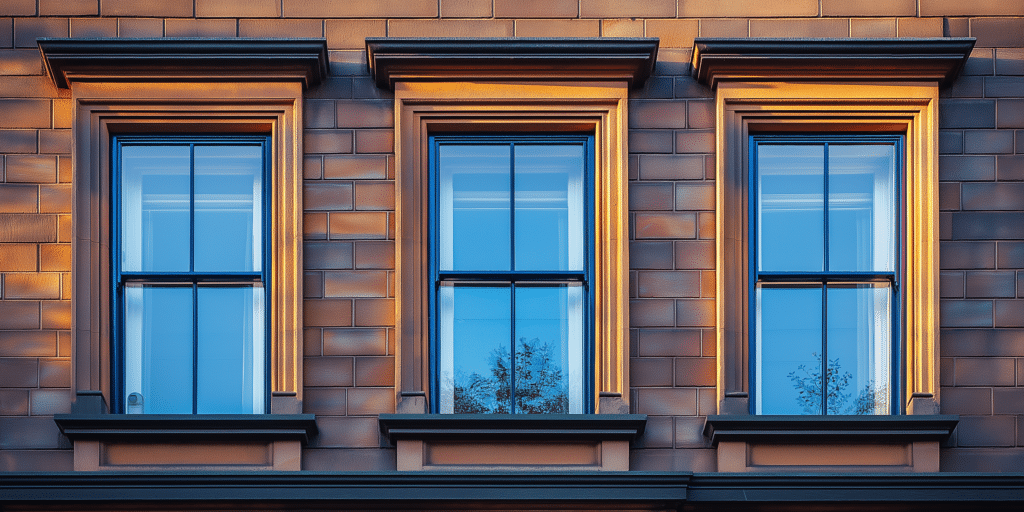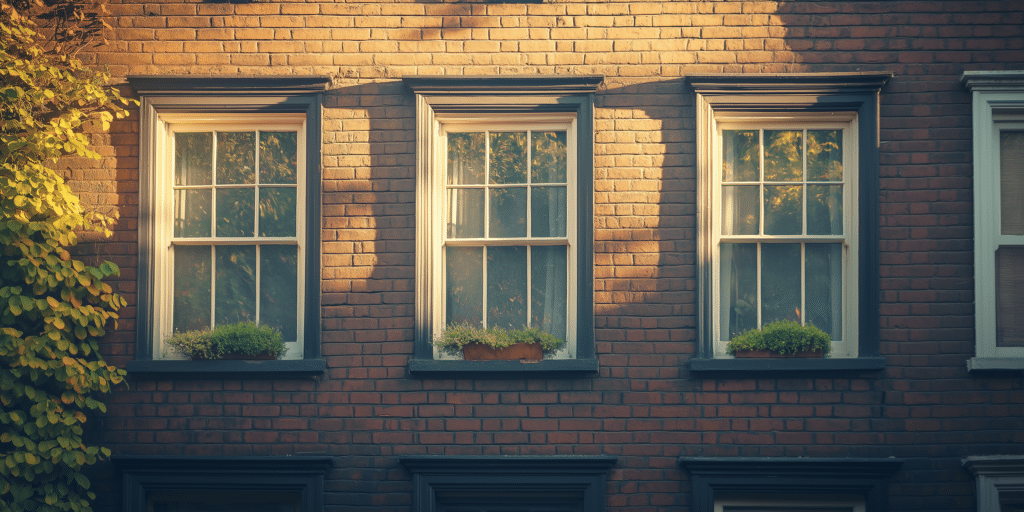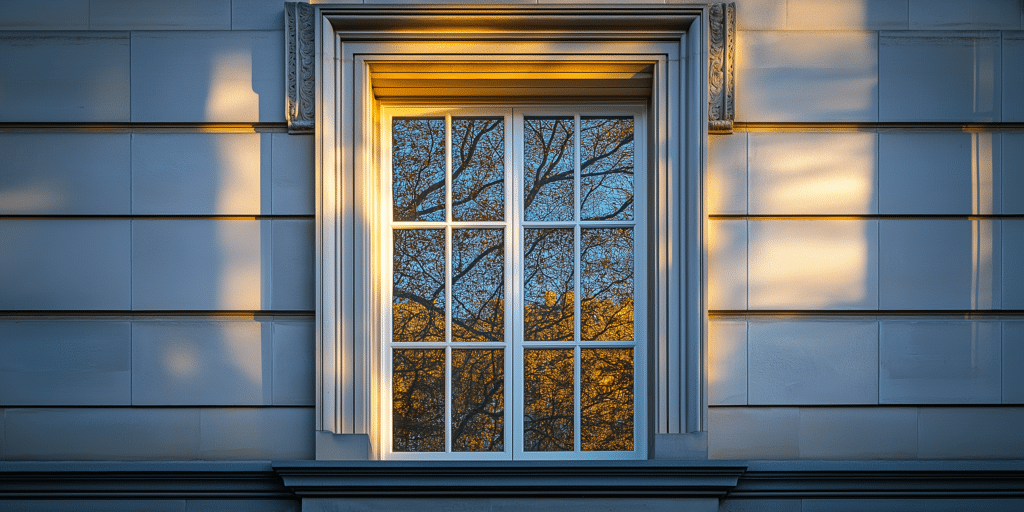Understanding the Functionality of Sash Window Mullions

The placement and design of mullions can directly affect the thermal performance of sash windows. For instance, properly sealed and aligned mullions help to minimise heat loss, enhancing the window’s energy efficiency. This is particularly important in older properties where maintaining the historical integrity of the windows is crucial, yet modern energy standards must still be met. According to a study, upgrading sash windows with modern materials while preserving original mullion designs can lead to a 30% improvement in energy efficiency.
In double-hung sash windows, mullions provide critical support to both the upper and lower sashes, ensuring they remain aligned and easy to operate. Misalignment or poor installation of mullions can lead to operational issues, such as sashes sticking or failing to stay open. This structural role highlights the importance of precision during installation, as even slight deviations can impact the overall functionality of the window.
Furthermore, the aesthetic contribution of mullions cannot be overstated. They add a rhythmic division to the window’s surface, creating visual interest and enhancing the traditional character of period properties. A well-designed mullion can transform a simple window into an architectural feature, as noted by the Society for the Protection of Ancient Buildings (SPAB), which emphasises the importance of retaining original mullion designs during restoration projects.
Types of Mullions in Sash Windows
There are several types of mullions commonly used in sash windows, each with distinct characteristics and uses. Structural mullions, for example, are essential load-bearing elements that provide support to the window frame, ensuring the stability of the sashes. These mullions are typically thicker and more robust, designed to withstand the forces exerted by the window and external elements.
Decorative mullions, on the other hand, are primarily used to enhance the aesthetic appeal of the window. These are often slimmer and more intricately designed, reflecting the architectural style of the building. In historical buildings, decorative mullions can feature elaborate carvings or mouldings, adding to the window’s visual richness. As stated by Historic England, retaining these decorative elements is key to preserving the character of heritage properties.
The materials used for mullions also vary, with wood being the traditional choice. Wooden mullions offer a classic appearance but require regular maintenance to prevent issues such as rot and warping. Modern materials, like uPVC and aluminium, provide greater durability and require less upkeep, though they may lack the authentic charm of wood. A report by the Wood Window Alliance highlights that well-maintained wooden mullions can last over 60 years, making them a sustainable choice for sash windows.
Another distinction is between single-hung and double-hung sash windows. In single-hung windows, the mullion mainly supports the stationary upper sash, while in double-hung windows, it supports both sashes, affecting the design and structural requirements. This difference is crucial for architects and builders to consider during the design and installation process.
Materials Used in Sash Window Mullions
The choice of material for sash window mullions is a critical decision that impacts both the aesthetic and functional aspects of the window. Traditional wooden mullions are favoured for their classic appearance and historical authenticity. However, wood requires regular maintenance, including painting and sealing, to protect against rot and decay. According to the Timber Research and Development Association (TRADA), untreated wooden mullions exposed to the elements can begin to deteriorate within 10 years, making proper maintenance essential for longevity.
Modern alternatives such as uPVC and aluminium offer distinct advantages. uPVC mullions are known for their durability, resistance to weathering, and low maintenance requirements. These mullions do not rot or warp, making them a practical choice for modern sash windows, especially in areas with harsh weather conditions. However, some critics argue that uPVC lacks the visual warmth and authenticity of wood, which can be a significant consideration in period properties.
Aluminium mullions provide a sleek, contemporary look and are highly durable. They are resistant to corrosion and offer excellent structural support, making them ideal for larger windows. Aluminium’s strength allows for slimmer profiles, which can maximise the glass area and enhance the window’s energy efficiency. According to the Aluminium Federation, windows with aluminium mullions can last over 80 years with minimal maintenance, making them a cost-effective and sustainable choice.
Composite materials, which combine the benefits of different materials, are also increasingly popular. These mullions may feature a wooden core for strength, encased in a uPVC or aluminium shell for durability and weather resistance. This combination offers the best of both worlds: the structural integrity and aesthetic appeal of wood, with the low maintenance and durability of modern materials.
Historical Evolution of Mullions in Sash Windows

The design and use of mullions in sash windows have evolved significantly over the centuries, reflecting broader architectural trends and technological advancements. During the Georgian era, mullions were typically simple and elegant, made from wood and designed to complement the symmetrical proportions that characterised the period’s architecture. Georgian sash windows often featured slender mullions that emphasised the verticality of the design, creating a sense of height and grandeur.
In the Victorian era, the industrial revolution brought about changes in the materials and techniques used in window construction. Mullions became more ornate, with intricate carvings and embellishments reflecting the Gothic Revival and other popular architectural styles of the time. The use of cast iron and other metals became more common, allowing for more elaborate designs and greater structural capabilities. A study by the Victorian Society notes that many Victorian buildings still retain their original iron mullions, which have stood the test of time due to their durability and strength.
The Edwardian period saw a return to simpler, more understated designs, with mullions reflecting the broader architectural trend towards lightness and simplicity. Wooden mullions with clean, straight lines became the norm, often painted in light colours to complement the airy interiors favoured during this period. This shift reflected a broader cultural movement towards modernity and efficiency, as noted in a report by the Edwardian Society.
Mullions continue to evolve in contemporary sash window design, with an increasing focus on energy efficiency and sustainability. Modern materials such as uPVC and aluminium are now commonly used, offering improved thermal performance and lower maintenance requirements. However, there is also a growing interest in preserving and restoring traditional mullions, particularly in listed buildings and conservation areas, where historical accuracy is paramount.
Installation and Alignment of Mullions in Sash Windows
Proper installation and alignment of mullions are crucial for the performance and appearance of sash windows. The process begins with precise measurements to ensure that the mullions are cut to the correct size and fit snugly within the window frame. This step is essential for maintaining the window’s structural integrity and ensuring that the sashes operate smoothly.
During installation, professionals use a range of tools, including saws, chisels, and drills, to secure the mullions in place. For wooden mullions, traditional joinery techniques such as mortise and tenon joints may be used, providing a strong and durable connection. uPVC and aluminium mullions are typically attached using screws and brackets, with careful attention to alignment to prevent any operational issues with the sashes.
Alignment is particularly important in double-hung sash windows, where the mullions must support both the upper and lower sashes. Any misalignment can lead to problems such as the sashes sticking or failing to close properly, compromising the window’s functionality and energy efficiency. To ensure precise alignment, installers often use laser guides and spirit levels, adjusting the mullions as needed to achieve the correct positioning.
Improper installation can have significant consequences, not only for the window’s operation but also for its appearance. Misaligned mullions can create gaps that allow drafts and moisture to penetrate the window, leading to potential damage and increased energy costs. Additionally, visible misalignment can detract from the window’s aesthetic appeal, particularly in period properties where historical accuracy is important.
Mullions and Energy Efficiency in Sash Windows
Mullions play a crucial role in the energy efficiency of sash windows, acting as barriers that help to reduce heat loss and improve thermal insulation. Properly sealed and insulated mullions can significantly enhance the overall energy performance of the window, contributing to lower heating and cooling costs.
The material and design of the mullions are key factors in their thermal performance. Wooden mullions, while aesthetically pleasing, can be prone to warping and gaps if not properly maintained, leading to increased heat loss. Modern materials like uPVC and aluminium, particularly when combined with thermal breaks, offer superior insulation properties, helping to keep homes warm in the winter and cool in the summer.
In addition to the material, the installation process also impacts the energy efficiency of mullions. Ensuring a tight seal between the mullion and the window frame is essential for preventing drafts and minimising heat transfer. This can be achieved through careful alignment during installation, as well as the use of high-quality weatherstripping and sealants.
Retrofitting existing mullions to improve energy efficiency is another option for homeowners looking to enhance the energy performance of their sash windows. This can involve adding or replacing weatherstripping around the mullions, resealing any gaps, and upgrading the materials used for the mullions themselves. For example, replacing old wooden mullions with modern uPVC versions can lead to a measurable improvement in thermal insulation, according to research by the Energy Saving Trust.
Furthermore, the design of modern mullions often incorporates features specifically aimed at enhancing energy efficiency. This includes the use of thermal breaks in aluminium mullions, which help to reduce heat transfer and prevent condensation. By considering both the material and the installation method, homeowners can significantly improve the energy performance of their sash windows while maintaining their traditional appearance.
Maintenance and Restoration of Sash Window Mullions

Mullions, like other components of sash windows, require regular maintenance to ensure their longevity and functionality. Common issues that can affect mullions include rot, warping, and general wear and tear, particularly in wooden mullions that are exposed to the elements. Untreated wooden mullions in sash windows can begin to deteriorate within a decade if not properly maintained.
Homeowners can prevent damage to their mullions by regularly inspecting them for signs of wear, such as cracks or peeling paint. Applying a fresh coat of paint or varnish can help protect wooden mullions from moisture and UV damage. For metal mullions, particularly those made from aluminium, maintenance is generally minimal, though it’s still important to clean them regularly to prevent corrosion.
When it comes to restoring aged or damaged mullions, the process often involves removing any decayed material, repairing or replacing sections of the mullion, and applying protective treatments. In historical properties, restoration may require the use of traditional materials and methods to maintain the window’s original appearance. The Society for the Protection of Ancient Buildings (SPAB) recommends using historically accurate materials wherever possible to preserve the architectural integrity of the building.
The restoration process for modern mullions is typically more straightforward, involving the replacement of damaged sections with new materials. However, even with modern windows, it’s important to ensure that the restored mullions match the original design in terms of appearance and functionality. This attention to detail is crucial in maintaining both the aesthetic and structural integrity of the sash windows.
Aesthetic Considerations for Sash Window Mullions
The design of mullions is a key factor in the overall aesthetic of sash windows. Mullions contribute to the visual rhythm and symmetry of the window, creating a pleasing balance between the panes of glass. This balance is particularly important in traditional sash windows, where the alignment and proportions of the mullions can significantly impact the window’s appearance.
Customising mullions allows homeowners to tailor the look of their sash windows to match the architectural style of their property. For example, ornate wooden mullions with detailed carvings can add a touch of historical elegance to a Victorian home, while sleek, minimalist aluminium mullions might be more suitable for a contemporary building. The ability to customise mullions is one of the key reasons why sash windows remain popular in both traditional and modern architecture.
Mullions can also be used to enhance the architectural style of a building by complementing other design elements. For instance, Gothic-style mullions with pointed arches can add a historical touch to a building, while minimalist mullions can create a modern, streamlined appearance. As the National Trust notes, retaining the original design of mullions is often critical to preserving the historical value of period properties.
In contemporary sash windows, there is a growing trend towards using slimmer mullions that maximise the glass area, allowing for greater natural light and improved views. This trend reflects a broader movement towards minimalist design in architecture, where the focus is on clean lines and simplicity. However, even in modern designs, the role of the mullion as a key aesthetic element remains unchanged, highlighting its enduring importance in window design.
Common Myths and Misconceptions About Sash Window Mullions
There are several common misconceptions about mullions in sash windows, particularly regarding their function and importance. One widespread myth is that mullions are purely decorative and do not serve a structural purpose. In reality, mullions play a crucial role in supporting the window frame and ensuring the stability of the sashes, especially in larger windows.
Another misconception is that replacing mullions in historical sash windows with modern materials will necessarily compromise the window’s aesthetic and historical value. While it’s true that maintaining original materials is often preferable, modern materials can be carefully selected and crafted to match the original design, providing both durability and historical accuracy. The Historic Environment Scotland emphasises that with the right approach, modern interventions can successfully preserve the character of historical windows.
Misunderstandings about the role of mullions can also lead to neglect in their maintenance. Some homeowners may not realise the importance of regular upkeep, such as repainting and sealing, leading to issues such as drafts, leaks, and compromised structural integrity. It’s essential to recognise the functional role of mullions in both the appearance and performance of sash windows to ensure they are properly maintained.
Accurate information about mullions can help homeowners make informed decisions about their care and maintenance. By understanding the balance between aesthetic considerations and functional requirements, homeowners can preserve both the beauty and performance of their sash windows, ensuring they remain a valuable feature of the property.
Comparing Mullions in Sash Windows vs. Other Window Types

Mullions in sash windows differ significantly from those in other window types, such as casement or fixed windows. In sash windows, mullions are designed to support the sliding sashes and divide the window into separate units, whereas in casement or fixed windows, mullions often serve to separate panes of glass without accommodating movement. The structural demands and aesthetic functions of mullions can vary considerably between these window types.
One of the main advantages of mullions in sash windows is their ability to maintain a traditional, period-appropriate aesthetic while also supporting the functional requirements of the window. Sash window mullions are essential for the classic look and operation of these windows, providing the necessary support for the sashes to slide smoothly. In contrast, mullions in other window types may primarily serve to separate panes of glass and support the window frame, impacting how the window opens and closes.
The functionality of mullions in different window types also varies. In sash windows, mullions are integral to the operation of the window, helping to support the sashes and ensure smooth movement. In fixed or casement windows, mullions may primarily serve a structural role, helping to divide the window into smaller sections and support the overall frame.
Designing and installing mullions in sash windows presents unique challenges compared to other window types. Precision in alignment and balance is crucial for the smooth operation of the sashes, whereas, in casement or fixed windows, the primary concern may be ensuring that the mullions provide adequate structural support. This difference in function and design highlights the specialised nature of sash window mullions and the expertise required for their installation.
Final Thoughts: The Significance of Mullions in Sash Windows
Mullions are an integral part of both traditional and modern sash windows, serving as both structural supports and key aesthetic elements. They contribute to the stability and functionality of the window, ensuring that the sashes operate smoothly and the window frame remains secure. Additionally, mullions play a crucial role in defining the visual rhythm and character of sash windows, making them a central feature in both historical and contemporary architecture.
The value of mullions in sash windows extends beyond their functional role. High-quality mullions, made from materials that match the original design, can significantly enhance the historical value of a property. They are essential in preserving the authentic appearance of period properties, contributing to their architectural integrity and historical significance.
Looking to the future, trends in mullion design are likely to continue evolving, with advancements in energy-efficient materials, smart technologies, and a continued focus on blending traditional aesthetics with modern functionality. Innovations in materials science may lead to mullions that offer improved insulation and durability without compromising on appearance, ensuring that sash windows remain both beautiful and efficient for years to come.
For homeowners, making informed decisions about the care and maintenance of sash window mullions is essential. By understanding the importance of these elements in both the function and appearance of the windows, homeowners can ensure that their sash windows continue to perform effectively and enhance the overall value of their property. Regular maintenance, careful restoration, and thoughtful selection of materials are key to preserving the beauty and functionality of sash window mullions for generations to come.




